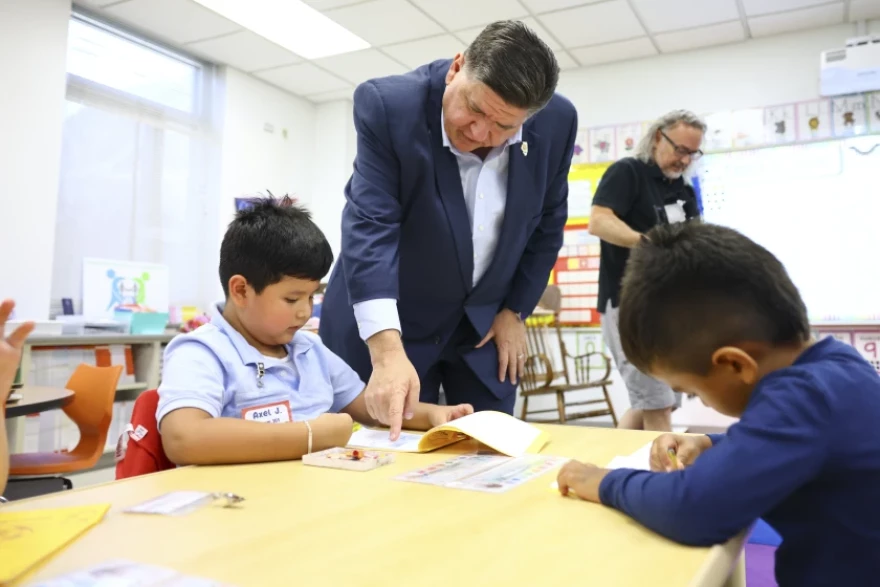Eight years after putting in place a tool that gauges kindergarten readiness, more children in Illinois are showing up to elementary school ready to go, but gaps between different groups of students remain and are pronounced, according to a new report on public education in the state.
“The correlation with kindergarten readiness and later success is real, strong and studied,” said Robin Steans, president of Advance Illinois, an education policy and advocacy organization. “So, the work there [is] not done.”
The kindergarten readiness analysis is one of the highlights of a report released Wednesday by Advance Illinois.
In 2017, Illinois implemented the Kindergarten Individual Development Survey, an observation-based tool to provide insight into what skills and knowledge students have and where they need to grow in language and literacy, math and social development.
The number of students entering kindergarten showing readiness in all three areas rose from 23.6% in 2018 to 31.6% in 2024.
However, not all students are seeing the same improvements. Readiness gaps widened from 2018 to 2023 for English language learners, by family income and by disability status. And still, about one-third of students don’t show readiness in any of the areas.
“While some gaps have narrowed — in some cases significantly — there is work ahead to ensure all students reach their full potential,” the report states.
Illinois has worked to tackle some of these learning gaps in part by addressing uneven funding through its evidence-based funding formula, which has led to a significant decrease in the amount of significantly underfunded districts.
The state has invested over $2 billion in the formula since 2018, shrinking the number of districts with less than 70% of the resources they need from 431 districts to 49 districts, the report states.
“The percent of students from low-income households, students of color, and/or English learners attending deeply underfunded districts has decreased significantly, overall and across locales,” the report states.
Steans said that funding is starting to show up in the classrooms, pointing to an increase in teachers as one example. Student-teacher ratios have declined over the last decade, from a 15.2:1 ratio in 2009 to a 13.2:1 ratio in 2024.
It used to be that wealthy districts had far more teachers per student than poorer ones, but that gap has since been erased. Steans called it “unbelievable.”
Another highlight of the report was academic growth. On average, Illinois students achieved close to five grade levels of academic growth between third and eighth grade for cohorts finishing in 2023 and 2024. That ranks Illinois second and third in reading and math growth nationally. High school graduation rates are also high.
But there were also areas where the state needed continued work. Overall, academic proficiency in Illinois remains largely flat. While the state weathered the pandemic better than others, growth has slowed and high school performance has dipped.
Roughly a third of Illinois students are demonstrating proficiency in reading and math at the fourth and eighth grade level. That is roughly the same as it was 20 years ago. The stagnation mirrors national trends, according to the report. Illinois was 28th in the nation in reading and math proficiency among fourth graders in 2024.
“While that is clearly not good news, it is notable that Illinois students held steady through pandemic disruptions, faring better than the majority of states,” according to the report.
Another area of concern was the mental well-being of high school students. The percentage of students feeling sad or hopeless increased from 27.8% in 2009 to 38.2% in 2023, according to a Centers for Disease Control and Prevention survey cited in the report.
The report also raised concerns about an affordability crisis for higher education. State spending on higher education is nearly last in the country, while tuition and fees are among the highest in the nation. Early child care is also prohibitively expensive, with the cost of center-based and home-based care increasing since 2018.
“When we don’t invest what we need to invest, it makes things more unaffordable for families, because those costs have to get covered somewhere,” Steans said.
Steans said the report shows Illinois has made progress in making sure children are ready to begin their education journeys and in student’s academic growth, but there’s more to be done.
“We’re doing some of the right things, but we’ve got more to do,” she said.

